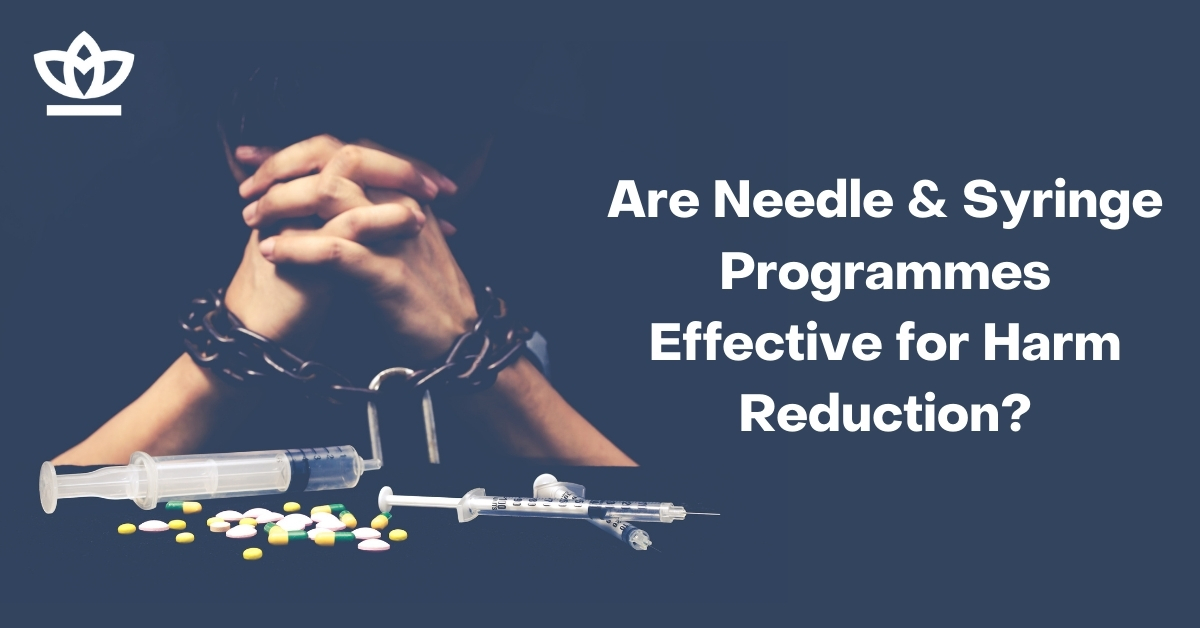Needle and Syringe Programmes – Harm Reduction or Harm Induction?

As illegal drug use continues to pose pandemic-like threats to countries around the world, governments seem to be losing hope in their ultimate purpose for drug abusers: abstaining from illegal drugs.
Complete Abstinence?
Though total abstinence is a commendable and necessary goal, governments are beginning to view the ambition as impossible. As a result, harm reduction, a program recently employed by many European and western countries, presents a plan to manage substance abuse rather than abstain from it entirely. Under harm reduction the government enables addicts.
In an effort to stunt the vicious spread of blood borne viruses, the program ironically provides addicts with sterile drug-injecting equipment. This morally inept governmental program takes a step backwards – in terms of abstinence. Harm reduction quickly leads to personal irresponsibility, and communicates the wrong message to addicts.
Needle Exchange Generates Personal Irresponsibility
Needle exchange demonstrates a practical aspect of harm reduction leading to personal irresponsibility. When the government hands out sterile needles, they not only feed addictions, but they also vicariously break their own rules.
For example, consider yourself the parent of an only child named Josh. Your desire to see Josh develop character and personal responsibility results in a set of rules and standards. One rule requires your son to make his bed every morning. On three consecutive mornings, you discover his blankets disheveled and untouched on the end of his mattress. On the fourth morning, you decide to confront your son:
“Josh, your bed has been a wreck four mornings in a row. It’s time to start making it.”
As his defense, Josh insists he doesn’t know how to make his bed. At this point, you have a few options. You could,
- begin making his bed for him,
- neglect to enforce your rule,
- take the covers away all together, or
- teach him how to make his bed – encouraging personal responsibility.
The first option seems unreasonable, because by making his bed, you encourage Josh to continue breaking the rule. The next option, neglecting to enforce the rule, will communicate that you don’t care if he makes his bed or not. This approach will initially confuse your son, and ultimately allow him to break the rule.
If you take Josh’s covers away all together, you’ll demonstrate one of two things: that you’ve lost hope in your child’s ability to make his bed, or that you’re simply frustrated and don’t want to deal with the issue.
Don’t Lower Your Standard!
Instead of lowering your standards in an effort to coexist with your son’s apparent “disability,” you should stick to your original purpose: to see Josh develop character and personal responsibility. Sticking to this purpose will result in choosing the final option, teaching Josh how to make his bed – the only approach that doesn’t contradict your initial intention.
The government certainly can’t take the covers of drug addiction away all together, so they have resorted to hand making the beds of drug addicts. This erroneous choice creates a relaxed outlook on illicit drugs, and will create disrespect towards governmental authority. Safely enabling addicts abets their dependence on drugs, and sacrifices integrity on the altar of “playing it safe”. When the government creates illegal loopholes in legal restrictions, inevitably the loopholes become bigger. With a program like harm reduction, there is never light at the end of the tunnel.
Drug Addicts Get the Wrong Message
In addition to the personal irresponsibility that harm reduction allows, the program also communicates the wrong message to drug addicts.
Imagine that you began making your son’s bed for him. At first, Josh might awkwardly watch as you fold the cotton sheets and flatten his quilt every morning. But as weeks turn into months, your service to him will become normal, and almost expected. When governments pass out sterile needles, they fuel addictions. At first, addicts might awkwardly step into needle exchange stations to shamefully exchange their needles for clean ones, but eventually the sterile needle exchange service becomes expected.
Poor Communication
Needle exchange stations communicate an apathetic approach towards drug abuse, causing some illegal drugs to become socially accepted pastimes. Until Josh’s mom taught him how to make his bed, she was forced to simply accept the circumstances she created. Harm reduction creates analogous circumstances: a social acceptance of what the program titles as illegal. This social acceptance demonstrates the original message of indifference towards illegal drugs communicated by a program like harm reduction.
Harm reduction demonstrates governmental frustration and contradicting ideas. The program communicates apathy in an area where integrity is essential.
Growing numbers of infections due to contaminated needles display the lack of personal responsibility among addicts. And the vicious cycle of harm reduction takes a step in the direction of condoning drug use, or at least tolerating it.
.
















